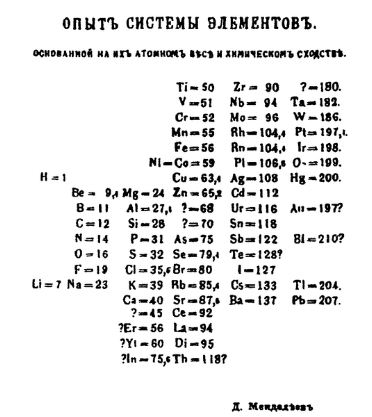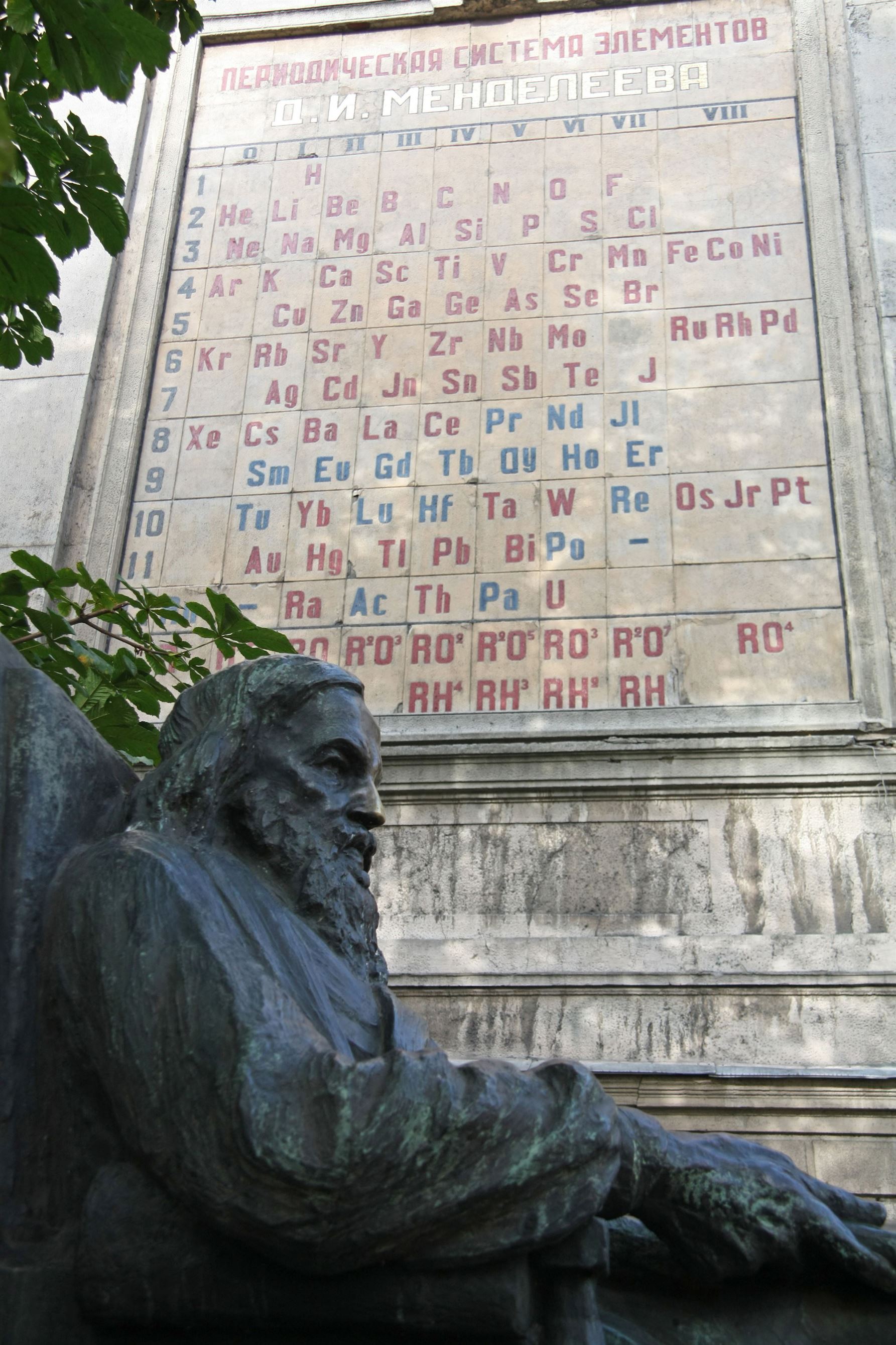Mendeleev Periodic Table
Mendeleev Periodic Table – We all know that there are 118 elements present in our periodic table. Out of these 118 elements, 94 elements are natural elements and 24 elements are synthetic elements. Back in the year 1800, only 30 elements were known. With the discovery of more and more elements, remembering the elements and their properties were burdensome for scientists. They started gathering information about the elements and categorizing it. The categorization of elements in a tabular form according to their properties became popular. The tabular form structure in which various elements are arranged according to their properties is known as the periodic table
Introduction to Mendeleev Periodic Table
Dmitri Ivanovich Mendeléev, a Russian chemist, was the most important contributor to the early development of the periodic table. Many periodic tables were made but the most important one was the Mendeleev periodic table.
In 1869, after the rejection of Newlands Octave Law, Mendeleev Periodic table came into the picture. In Mendeleev’s periodic table, elements were arranged on the basis of the fundamental property, atomic mass, and chemical properties. During Mendeleev’s work, only 63 elements were known. After studying the properties of every element, Mendeleev found that the properties of elements were related to atomic mass in a periodic way. He arranged the elements such that elements with similar properties fell into the same vertical columns of the periodic table.

Mendeleev’s periodic table
Among chemical properties, Mendeleev treated formulae of hydrides and oxides as one of the basic criteria for categorization. He took 63 cards and on each card, he wrote the properties of one element. He grouped the elements with similar properties and pinned it on the wall. He observed that elements were arranged in the increasing order of atomic mass and there was the periodic occurrence of elements with similar properties.
According to this observation, he formulated a periodic law which states:
“the properties of elements are the periodic function of their atomic masses.”
In Mendeleev periodic table, vertical columns in the periodic table and horizontal row in the periodic table were named as groups and period respectively.
Merits of Mendeleev Periodic Table
- Some gaps were left for the elements yet to be discovered. Thus, if a certain new element is discovered, it can be placed in a new group without disturbing any existing group.
Demerits of Mendeleev Periodic Table
- He was unable to locate hydrogen in the periodic table.
- Increase in atomic mass was not regular while moving from one element to another. Hence, the number of elements yet to be discovered was not predictable.
- Later on, isotopes of elements were found which violated Mendeleev’s periodic law.

A statue of Dmitri Mendeleev & a giant wall of the Periodic Table erected in St Petersburg, Russia
Frequently Asked Questions
What is the law of the Mendeleev periodic table?
Mendeleev claimed the famous periodic law that “Element properties are a periodic function of their atomic weight.” Mendeleev placed elements in the order of their atomic weights in the form of a table known as the Periodic Table of Mendeleev.
What is the difference between Mendeleev and the modern periodic table?
The main differences are: the periodic table of Mendeleev is based on atomic mass. The current periodic table is based on the number of atoms. Noble gasses (as they are not found at that time) were not included in Mendeleev’s periodic table. In Modern periodic table noble gasses in a separate group called group-18.
How did Mendeleev find atomic mass?
Mendeleev was not himself estimating the atomic mass. He had the information he was working on to see the repeated properties to find a pattern that turned out to be a chart. And he predicted their atomic mass on the basis of the pattern he observed for the atoms that were not detected.
What is Mendeleev famous for?
Mendeleyev is best known for his discovery of the periodic law he adopted in 1869 and the periodic table of elements he developed. He died on February 2, 1907, in St. Petersburg, Russia.
How do u find electrons in the periodic table?
A series of simple rules will determine the number of protons, neutrons, and electrons in an atom. The hydrogen nucleus number of protons is equal to the atomic number (Z). In a neutral atom, the number of electrons is equal to the number of protons.
Comments
Post a Comment
Thank You For Visit To My Blog ...
you will soon get the reply.. for your comment.......